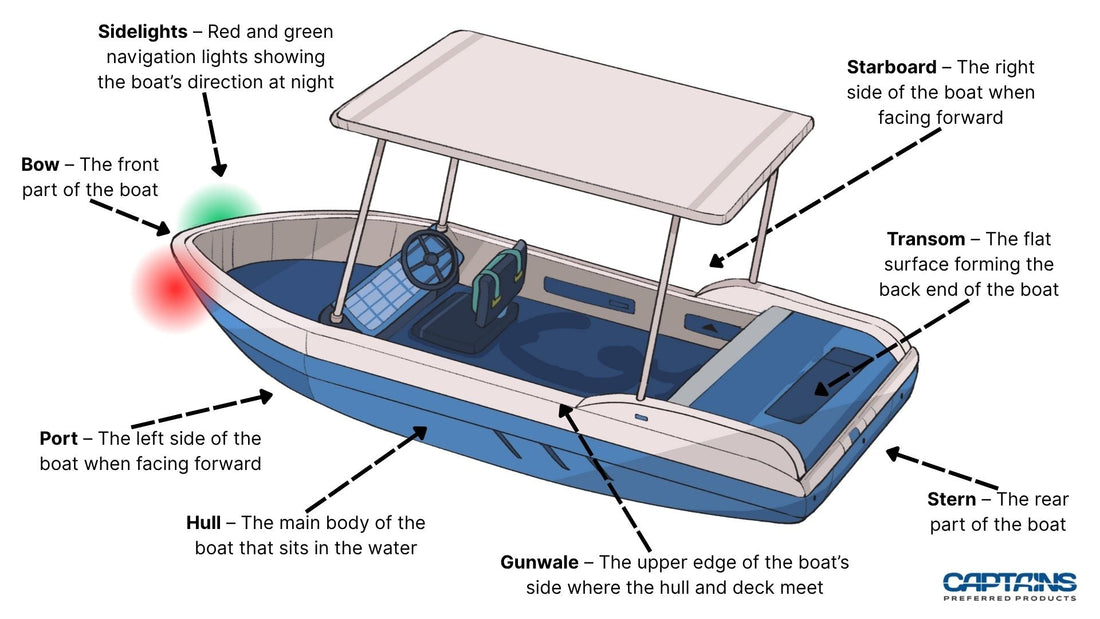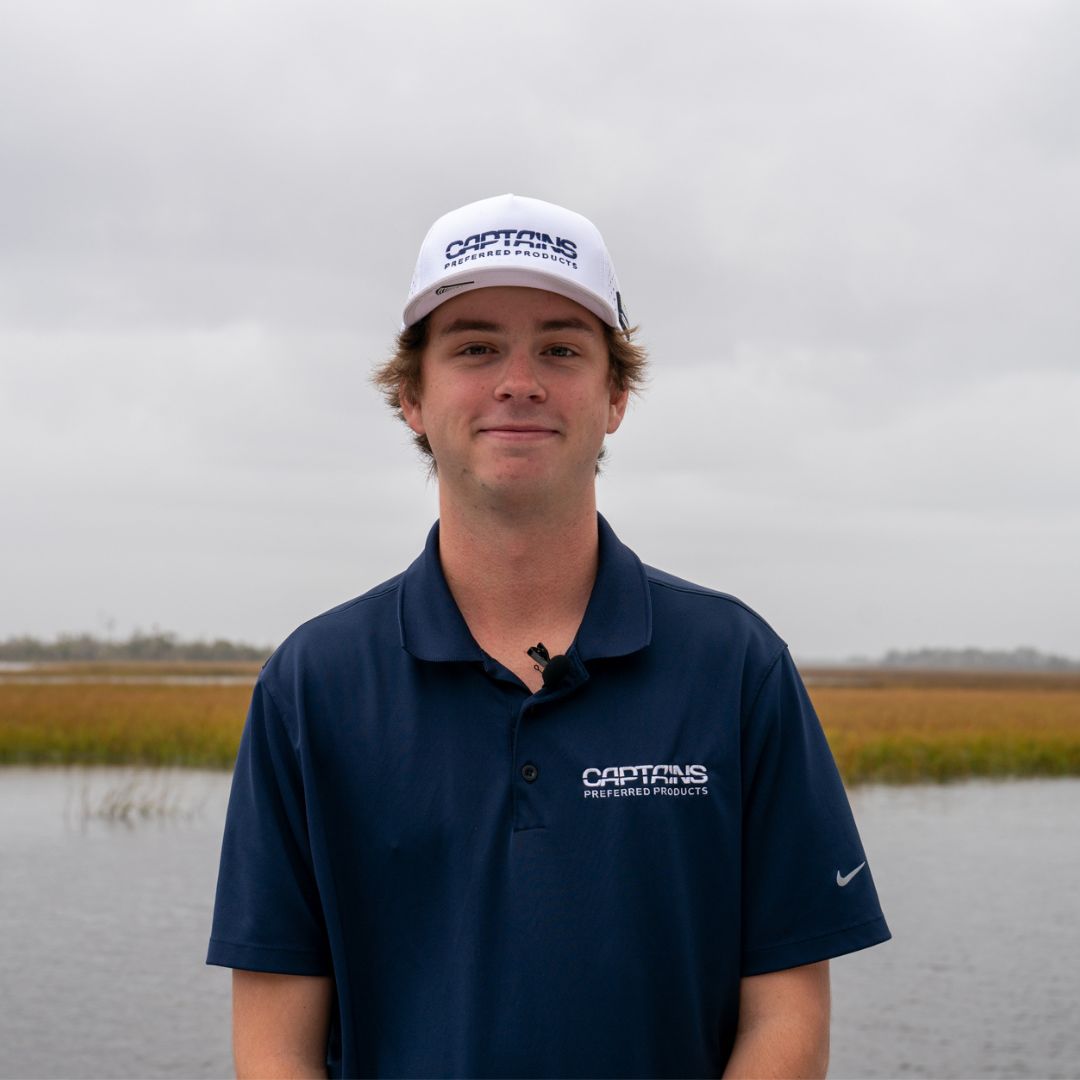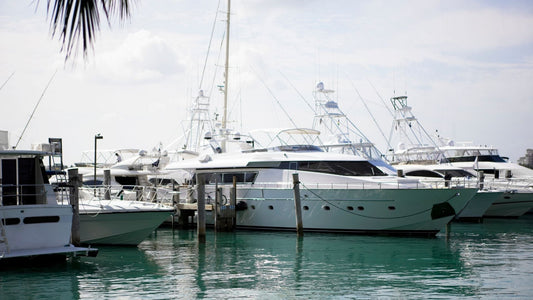
Boat Anatomy 101: Understanding the Main Parts of Your Boat
Nicholas HeislerShare
Whether you’re new to boating or have been out on the water for years, understanding the basic parts of your boat is essential. Knowing your boat’s anatomy helps you communicate clearly with other boaters, handle maintenance more confidently, and operate your vessel safely. In this guide, we’ll walk through the key components that make up most boats—from the hull to the lights—so you can better understand how each part contributes to performance, safety, and navigation.

Main Parts of a Boat Explained
1. Hull
The hull is the foundation of your boat—the main body that floats and cuts through the water. It provides structure, buoyancy, and stability. Hulls come in many shapes and materials, from sleek fiberglass designs to sturdy aluminum builds. The hull’s shape affects how your boat performs on the water: deep-V hulls handle rough seas better, while flat-bottom hulls offer more stability in calm, shallow waters.
2. Gunwale
Running along the top edge of your boat’s sides, the gunwale (pronounced “gunnel”) adds strength and structure to the hull. It’s also where you’ll often find mounted accessories like rod holders, cleats, or fenders. The gunwale acts as a transition between the boat’s interior and exterior, providing a secure handhold for passengers when moving around the deck.
3. Bow
The bow is the front section of your boat—the part that faces forward and cuts through the water. A well-designed bow helps improve the vessel’s efficiency, stability, and ride comfort by reducing drag and deflecting waves. When docking or anchoring, the bow is also the area where you’ll find your cleats, anchor mounts, and navigation lights.
4. Stern
Opposite the bow, the stern is the rear of your boat. It’s where many boats mount their engines or outboards, and it often serves as a boarding or swim platform. The stern’s shape affects how water flows off the back of your boat, influencing speed and fuel efficiency. It’s also where you’ll typically find access to the transom, the next key part of your vessel.
5. Transom
The transom is the flat vertical surface forming the back end of your boat. On outboard motor boats, it’s the part where engines are attached. A strong transom is critical—it must support the engine’s weight and handle the stress of movement and vibration. You’ll also see features like swim ladders, drain plugs, or trim tabs mounted here.
6. Keel
The keel runs along the bottom centerline of the hull, acting as the boat’s “spine.” It provides structural strength and helps keep your boat stable and straight while underway. Depending on the design, some boats have a deep fixed keel (common on sailboats) or a shallow one that blends into the hull (common on powerboats). A well-designed keel reduces side-to-side rolling and improves overall handling.
7. Port and Starboard
Every boater should know these two terms:
- Port is the left side of the boat when facing forward.
- Starboard is the right side when facing forward.
These terms are universal in boating and replace “left” and “right” to avoid confusion—especially at sea. Navigation lights also correspond to these sides: red on the port side and green on the starboard side.
8. Sidelights
Sidelights are the red (port) and green (starboard) navigation lights mounted near the bow. They help other vessels determine your direction and right-of-way at night or in low visibility. When another boater sees your red light, they know they’re looking at your port side; green means they’re seeing your starboard side. Properly functioning sidelights are vital for nighttime safety and compliance with maritime regulations.
9. All Around White Light
The all around white light is a 360-degree navigation light that’s visible from every direction. It’s typically mounted high—often above the stern—and must be used when your boat is anchored or operating under power after dark. This light signals your presence to nearby vessels, helping prevent collisions and keeping your boat visible in low-light conditions.
Knowing Your Boat From Bow to Stern
Understanding the parts of your boat does more than expand your nautical vocabulary—it helps you become a safer, more confident boater. From knowing where the keel sits to understanding how sidelights guide nighttime navigation, each component plays a vital role in keeping your vessel stable, efficient, and compliant on the water.
Whether you’re performing maintenance, explaining an issue to a mechanic, or teaching a new crew member the ropes, this knowledge ensures smoother communication and safer adventures ahead.




